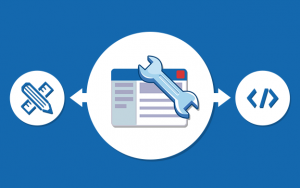
Blogging is sucking the life out of you.
Every time you hit publish, it all just starts again.
Again… and again.
Like a never ending loop, you sit down to write and it feels like groundhog day.
Your brain is fried, you’re out of ideas and your audience is impatiently waiting for more content.
But it doesn’t have to feel like this.
There is a better way to do things, a smarter way to blog – without the stress and all that draining stuff.
I’ve been there and know how you feel.
But I’ve spent some time obsessing over my writing process, so I could systemize it.
What I came up with is a 6-step writing process that I will share with you today – before you know it you’ll be writing better content, more regularly without the pain of doing it.
Want to learn how to get more traffic to your blog and website?
I am running free training on the “5 Key Strategies to Grow Your Traffic” that you can use without paying Google or Facebook a cent!.
These are the exact tactics I used to attract over 16 million people to my blog and have over 400,000 visitors a month read my posts ..Join us
Before we start
Before we dive into the writing process, there are a three things you will need to make this work for you.
1. A writing template – a writing template helps you re-create similar results over and over again. Every time you go to write, start with the same canvas – a base structure for how you will write your post. See an example of mine in Google Docs below;

2. A checklist – This is a tangible version of the template. It reminds us of what makes for an engaging post, and how to structure each section of our blog post. The best way to use a checklist is to print it off and physically tick off the things that are important for each section of your post after it is written. You will be surprised how often this process reminds you of things that you may have forgotten to include.
3. A repeatable writing process – Document the exact steps you use to write a post. From coming up with an idea, to researching and eventually writing. How long does it all take? How can you break each part into small components?
You can download the blog post checklist, writing template and writing process I use personally by clicking here.
Now let’s get into the fun stuff.
Step 1 – Find an idea and nail your headline
Figuring out what you want to write about can be frustrating. Sometimes it feels like you’ve written about everything already.
So if you leave this to the last minute, you’re bound to get stressed out.
Try and come up with a bunch of ideas every month or so, and store them in an editorial calendar, spreadsheet or some other place you capture notes.
But what is even more important than coming up with a backlog of ideas, is to be deliberate about what ideas you are choosing.
What posts can you write that will complement your website’s target keywords?
If you have done this pre-work, all you are doing in this stage of the writing process is grabbing an idea from your calendar and getting ready to write.
Once you’ve picked an idea, come up with 4 or 5 headline options for the post.
What headline will grab your readers by the shirt and get them interested?
We will come back and pick the best headline later in the process.
But if you want help picking an engaging headline you might like to check out CoSchedule’s Headline Analyzer.

This step shouldn’t take you longer than 5 minutes if you have done the preparation.
Step 2 – Research your idea
Step 2 is all about validating your idea and figuring out what you will eventually write about.
Take your chosen topic or keyword and head over to Google.

Sequentially click on any articles that turn up on the first two pages of your search – preferably the ones that sound interesting or are written by someone you respect.
For all the articles you find, paste their links into an appendix below your writing template.

You don’t need to read these articles right now, so don’t be too picky about the ones you choose.
This step should take about 5 to 10 minutes.
Step 3 – Create a structure and fill it up with content
In this step you will be drawing inspiration from all the best content the chosen topic to come up with a post structure.
Literally read through all of the links saved in your writing template.
As you’re reading, take it old school.
Grab a pen and notepad, and write down the key points, themes or structures you are regularly seeing.
After a couple of edits these scribbles will become your blog post structure.
Your structure may be a step-by-step process or a list – something that makes sense for your topic.
Replace your generic headings in the writing template with this new structure, and start to get messy.
Fill up your template and structure with all the best content you have found in these articles. (I call this ‘Shaking’)
Make sure you do this in a different color font.

Literally copy and paste everything you can under each heading. (Don’t worry, we will edit this later so it’s not plagiarism)
The best content you will find useful during this process are compelling introductions, interesting stats and case studies you may like to include in your post.
As well as other people’s content, use this step of the writing process to revisit old ebooks, guest posts or other content you have written – don’t let these gems go to waste.
This part of the process should take you about 30 minutes.
Step 4 – Write without distraction
This is usually when we all panic, stress builds up and we decide to trawl through our Facebook feed rather than do what we should be doing – writing.
But because you have already come up with your topic, researched it thoroughly and created a structure based on that research; this step is way easier.
I like to call this part of the process ‘Baking’, because you are metaphorically baking all of the content you just collected into one well structured, highly engaging blog post.
Sit down, set yourself a timer – for however long you want – and start writing. I don’t care if it is 15 minutes, 30 minutes or an hour – give it a go.
Now that you have broken down your blog post into very specific sections, you can write them separately and bring it all together at once.
Not only will this help you overcome writer’s block when you sit down, but it will also allow you to write one post in multiple stints.
Note: As you’re writing, try and avoid doing anything else. And I mean ANYTHING. Don’t add links, images or any of that polish just yet. You are in a writing flow, so now is the time to capitalize on that.
When you’re in your flow, and want to include an image in your post, use a placeholder instead.

Disclaimer: Please don’t plagiarize other people’s work during this process. The content you have copied is for inspiration. It is there to give you ideas and help you create a post that is even better than other content on the topic.
This part of the process will take as long as you need it to. If you are genuinely ‘writing without distraction’ you should be able to write about 1,000 words per hour.
Step 5 – Iron out the kinks and make it visual
This step is a time sucker, but a necessary evil.
Now that you have a high-quality blog post you are probably desperate to get it out to the world.
But your work is not quite done yet.
It’s absolutely essential that you read your post from start to finish and iron out any grammatical errors or spelling mistakes.
Then you will need to add in any links you have mentioned and all those fancy images you have written about. (As you can see I use a lot of screenshots, it helps the reader engage with what you are saying)
As you are reading through your post, have your blog post checklist on your desk – ticking things off as you go.
Once you are happy with the post, copy and paste it into your publishing platform. (For me this is taking the post from Google Docs to WordPress, which is a seamless transition)
Adding in images isn’t too challenging, because you have clearly marked where you want them.
Note: When you put a placeholder in your blog draft for an image, make it descriptive. This way when you get to this step it will jog your memory.
I would recommend using Skitch to capture screenshots, it allows you to add in annotations, arrows and boxes.

Once you have all your images, links and editing done – you’re ready to move onto the next step.
This part of the process can be a little tedious, especially if you use a lot of screenshots and images like I do. I would put aside about 30-60 minutes for step 5.
Step 6 – Don’t forget about SEO, then hit publish
Now for the last step – you made it.
This one is pretty simple but it’s super important for the long-term SEO benefits on your blog.
Pick your blog categories and tags. Then link to other internal posts or pages on your site. This will up your SEO juice for every post.
Finally, optimize your post for SEO using something like WordPress SEO by Yoast.
Yoast reminds you of where to include keywords, how many to include and how to make your post look nice in search engines.
See below;

This shouldn’t take longer than 15 minutes.
Now… that glorious moment you’ve been waiting for.
Hit publish!
Wrapping it up
So, you can forget about writer’s block.
Forget about stressing the next time you sit down to write.
A little while ago I chose to find a better way of doing things, and you can make a choice to do the same.
If you’re ready, download the ‘Write Like a Boss Bundle’ and get started.
(275)
Report Post








